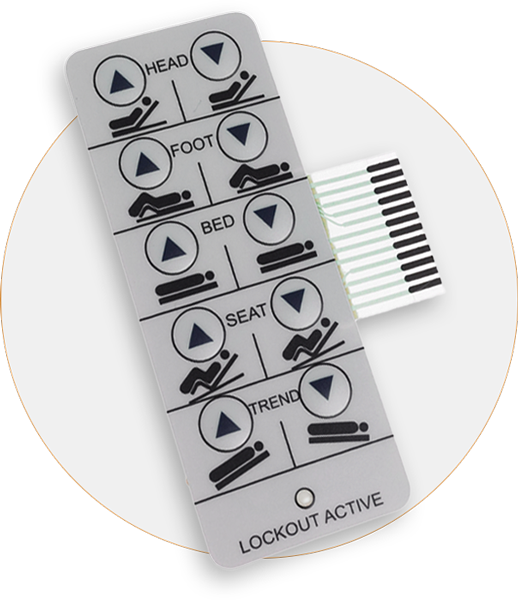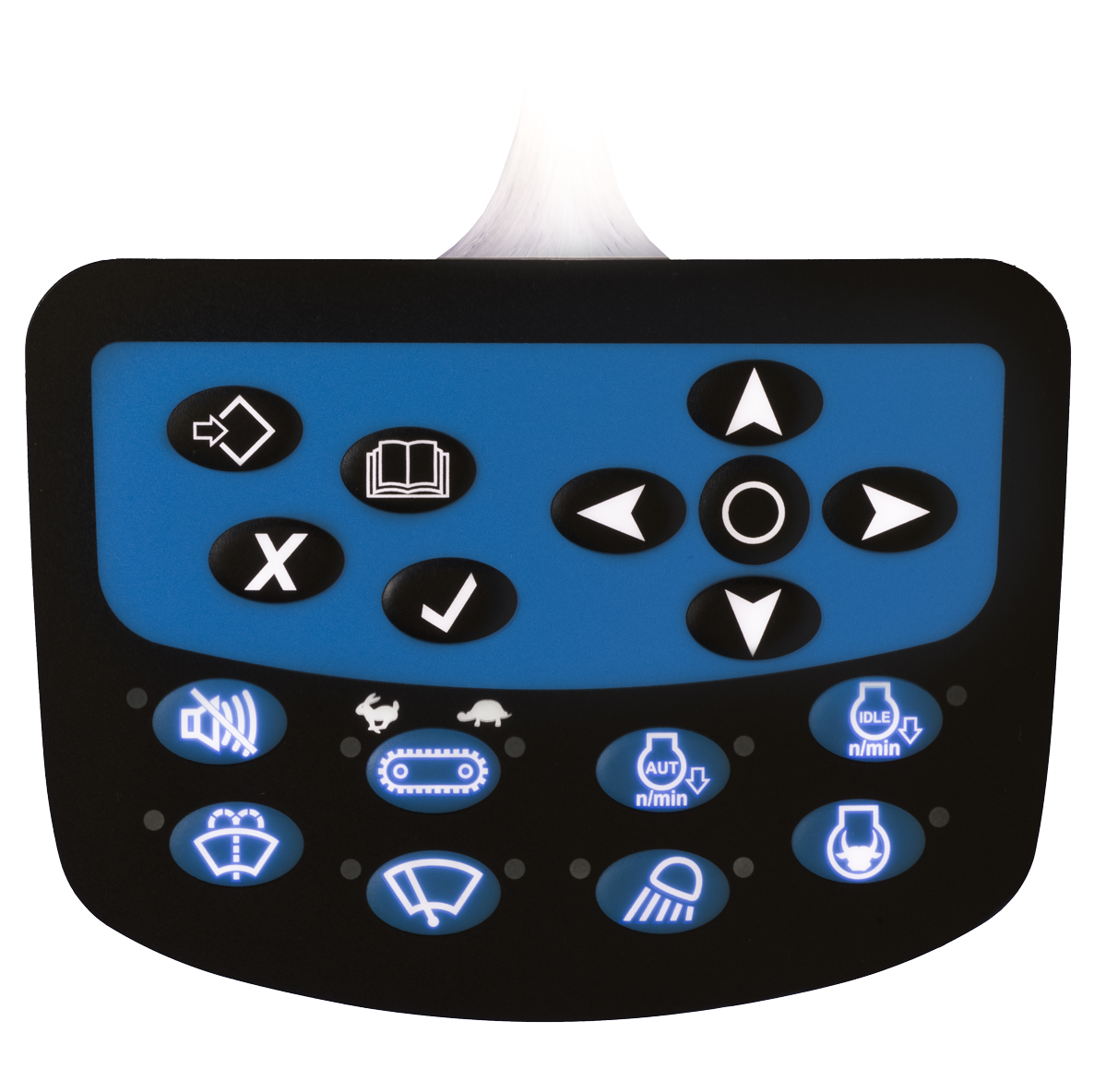Everything About Membrane Layer Switch Over: Understanding Its Style and Functionality
When you believe about the control interfaces in modern gadgets, membrane layer switches frequently come to mind. These elements are greater than just switches; they mix design and performance effortlessly. Recognizing how they function and what makes them effective can alter your point of view on everyday electronic devices. There are subtleties to their design and performance that you might not be mindful of. Allow's explore what collections membrane layer switches apart from other control systems.
What Are Membrane Layer Switches?

Membrane layer switches can additionally be personalized concerning form, size, and graphics, allowing makers to create special user interfaces customized to particular items. In general, membrane buttons play a significant function in enhancing individual experience throughout a wide array of applications.
How Membrane Layer Switches Over Work
When you press a key on a membrane layer button, it triggers an uncomplicated yet efficient device. The top layer, often made from adaptable material, lowers onto a conductive layer under it. This action bridges the void in between conductive traces, finishing an electrical circuit. As soon as the circuit closes, it sends out a signal to the tool's controller, which translates your input.
You'll notice that the tactile comments varies based on the switch layout, offering either a soft click or a much more noticable feedback. As soon as you launch the key, the membrane go back to its initial setting, resuming the circuit and quiting the signal. This procedure takes place almost instantaneously, guaranteeing a responsive individual experience.
Membrane switches are preferred as a result of their longevity and resistance to dust and wetness, making them ideal for various applications, from house devices to clinical tools. Comprehending this operation aids you value their prevalent use.
Trick Parts of Membrane Layer Buttons
Understanding the vital components of membrane layer switches is fundamental for comprehending their capability and design. The protective layer guards against ecological variables and use, extending the switch's life expectancy. By understanding these elements, you'll gain insight into how membrane changes run and their significance in numerous applications.
Materials Used in Membrane Layer Switch Over Style
The efficiency and resilience of membrane layer switches heavily rely on the products used in their style. You normally experience polyester and polycarbonate as key substratums as a result of their exceptional toughness and adaptability. These materials stand up to scratches and chemicals, making them ideal for requiring environments.
The conductive layers usually utilize silver or carbon, selected for their reliability and conductivity. membrane switch manufacturer. Silver supplies remarkable performance, while carbon is an affordable option. For the overlay, you could consider a matte or shiny finish, depending upon your aesthetic requirements and individual experience
Make certain to select adhesives that hold up against ecological aspects like temperature and moisture. Choosing the right products will certainly assure your membrane layer button stands the test of time.
Style Considerations for Membrane Buttons
While designing membrane buttons, it's essential to consider numerous factors that influence their capability and individual experience. Beginning by concentrating on the layout and switch dimension; ensure they're intuitive and very easy to browse. Think about the tactile feedback you wish to give-- will customers need a visible click or a softer touch? Additionally, think of the products you'll utilize, as they'll impact resilience and visual appeals.
Don't forget the graphic layout; clear labeling and this contact form color comparison are substantial for exposure. Validate your design fits environmental aspects, like dampness or temperature variants, which can impact efficiency. Keep in mind the importance of testing prototypes with real individuals to gather comments and make required modifications. This iterative process assists you improve the design, verifying it satisfies both practical and visual demands properly. By carefully thinking about these aspects, you'll create a membrane switch that boosts functionality and complete satisfaction.
Applications of Membrane Buttons
Membrane layer buttons are functional parts located in numerous applications, from industrial tools to consumer electronics. You'll see their impact in devices that require resilient interfaces and in devices that gain from smooth designs. Comprehending these applications helps you appreciate the performance and functionality of membrane layer switches in everyday modern technology.
Industrial Devices Use
When you're aiming to improve the performance of commercial devices, membrane layer switches supply a reliable service that incorporates longevity with user-friendly style. These buttons are excellent for harsh environments, offering resistance to dirt, dampness, and chemicals. You'll find them in control panels for producing devices, HVAC systems, and medical gadgets, where precision and responsiveness are crucial. Their low profile suggests they fit perfectly into numerous equipment, saving important room while maintaining convenience of use. With adjustable graphics and backlighting options, you can create an intuitive interface for operators, boosting effectiveness and safety. Plus, their lengthy life expectancy reduces upkeep costs, making them a smart investment for your commercial applications. Embrace membrane layer switches to simplify your operations and improve overall performance.
Customer Electronic Devices Assimilation
In the domain of consumer electronic devices, membrane buttons play a necessary duty in boosting individual interaction and tool performance. Membrane layer buttons additionally ensure toughness and resistance to dust and wetness, prolonging the lifespan of your electronic devices. By choosing membrane layer buttons, you enhance not simply the functionality however also the design of your tools, making day-to-day interactions smooth and pleasurable.
Benefits and Downsides of Membrane Layer Buttons
While membrane layer switches use a series of advantages, they likewise come with some downsides that you need to take into consideration. One significant benefit is their portable style, making them excellent for space-constrained applications. They're additionally affordable, giving a long lasting solution with a low manufacturing cost. In addition, their seamless surface area is easy to clean, improving health in environments like health centers.

Nonetheless, there are negative aspects. Membrane switches can Visit This Link have a shorter lifespan compared to mechanical buttons, particularly under hefty use. They can likewise be much less tactile, which might impact customer responses during operation. If damaged, fixing them can be tough and commonly needs full replacement. Ultimately, their sensitivity to severe temperature levels and ecological conditions may restrict their effectiveness in certain settings. Stabilizing these pros and disadvantages will certainly help you identify if membrane layer buttons are the best fit for your task.
Often Asked Questions
The Length Of Time Do Membrane Layer Switches Typically Last?
Membrane layer switches usually last in between 5 to 10 years, relying on usage and environmental conditions. You'll intend to assess elements like wear, exposure to moisture, and temperature level variations to determine their long life successfully.
Can Membrane Layer Changes Be Personalized for Certain Designs?
Yes, look here you can customize membrane switches to fit certain styles (membrane switch manufacturer). You'll have the liberty to select colors, forms, and formats that match your project's needs, ensuring they blend flawlessly with your overall visual
What Is the Cost Variety for Membrane Change Production?
The cost range for membrane switch production generally falls in between $1 and $10 each, relying on variables like layout intricacy, amount, and materials. You can obtain quotes from suppliers to find the best alternative.

Are Membrane Switches Water Resistant or Immune?
Membrane layer switches can be developed to be waterproof or immune, depending upon products used and building and construction methods. If you need them for wet atmospheres, ensure you specify those needs throughout the design procedure.
How Do Membrane Layer Changes Compare to Conventional Switches?
Membrane switches are typically thinner and a lot more adaptable than typical buttons, offering a sleek design. They're typically much easier to clean and incorporate, but could not provide the tactile feedback you're used to with mechanical options.
Final thought
